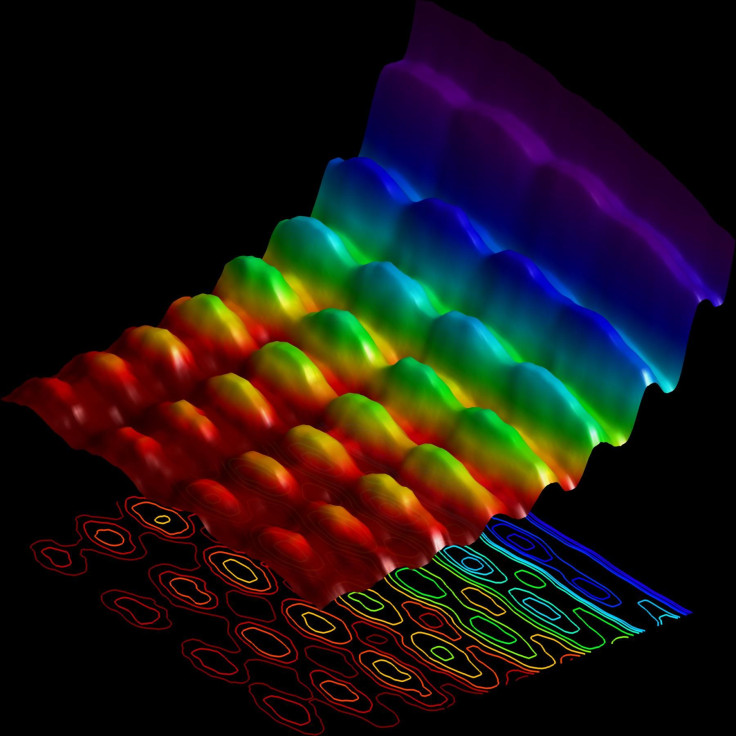First Ever Photo Of Light As A Wave And Particle Described By Scientists As 'Breakthrough'

We all know from science class that light is both a wave and a particle. While scientists have observed this, they have never been able to observe both states at the same time until a “breakthrough” experiment. The researchers used electrons to take an image of a wave of light to create the “paradoxical” snapshot of light.
As the researchers from Ecole Poytechnique Federale de Lausanne (EPFL) explain, Albert Einstein discovered the "photoelectric effect" -- metals emit electrons when hit by UV light -- which proved light is a wave and a stream of particles. This discovery won Einstein the 1921 Nobel Prize in Physics. Experiments have shown light as a wave and as a particle, but taking a family photo had been elusive before the EPFL experiment.
First, the researchers shot a laser beam at a nanowire -- an incredibly thin piece of wire -- to create a standing wave of light. Electrons were then shot at the nanowire that interacted with the wave of light. The electrons were used to take a photo of the light, but also caused the particles, known as photons, to speed up or slow down. A special microscope was used to observe this interaction between electrons and photons, which led to the first-ever image of a light as a wave and as a particle.
"This experiment demonstrates that, for the first time ever, we can film quantum mechanics -- and its paradoxical nature -- directly,” lead researcher Fabrizio Carbone, from EPFL, said in a statement. The research was published in the journal Nature Communications.
Manipulating things on the tiniest scale possible opens up interesting possibilities for science and consumers. Carbone said the manipulation of quantum phenomena could improve quantum computing -- using quantum physics to perform calculations on data. Researchers from the University of Cincinnati are also manipulating light and using nanowires that could lead to faster computers or better TVs, which use light instead of electricity, and that are cheaper and use less power.
© Copyright IBTimes 2024. All rights reserved.






















